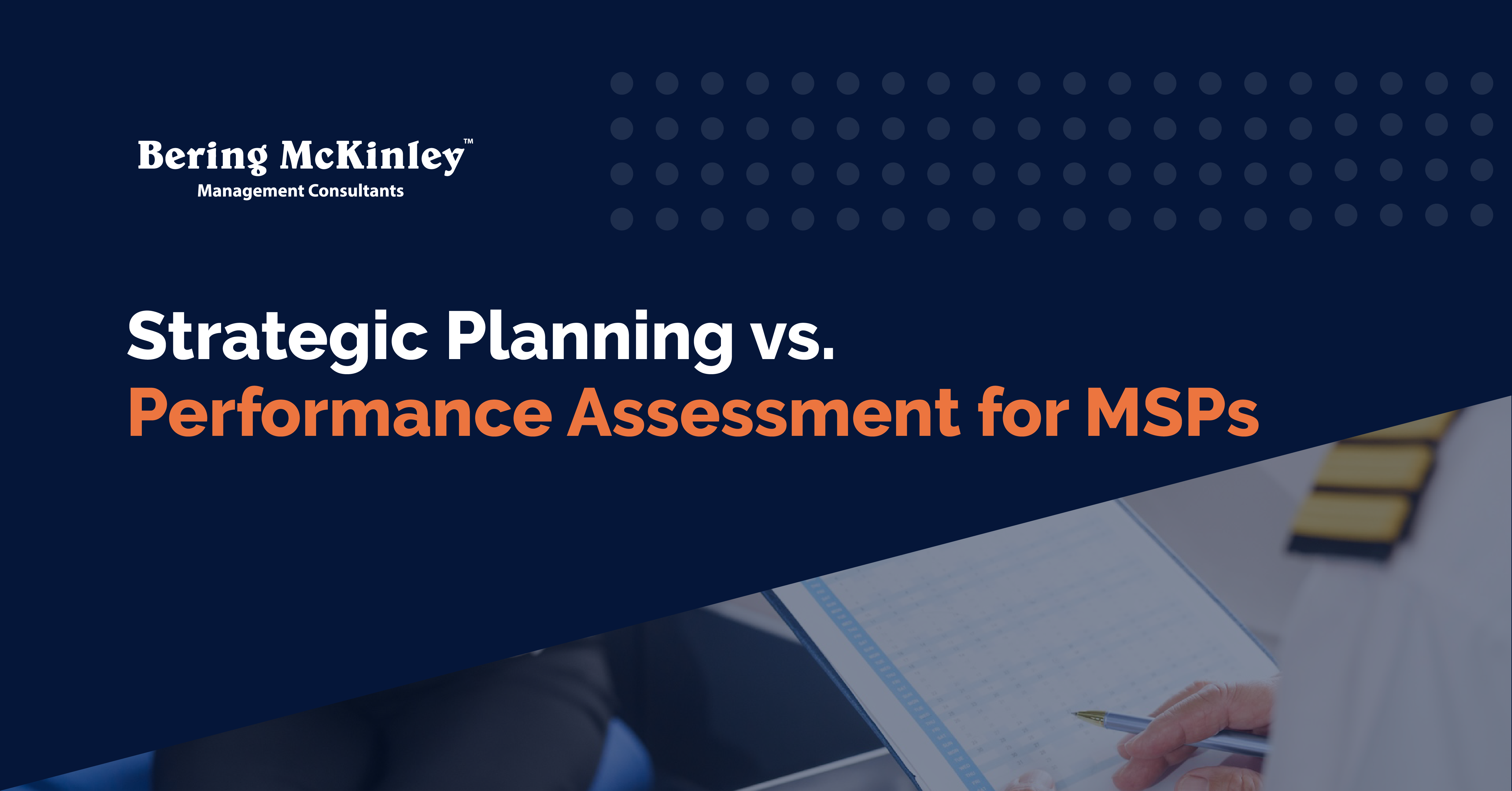From Planning to Execution: Translating Business Goals into Performance Targets
Running a successful Managed Service Provider (MSP) business is no small feat—it requires careful strategy, precise execution, and constant...
3 min read
 Josh Peterson
:
Feb 3, 2025 11:00:00 AM
Josh Peterson
:
Feb 3, 2025 11:00:00 AM

MSP owners, does your business feel stuck in a reactive cycle? Always firefighting day-to-day operational issues but rarely finding time to think about scaling or improving performance? Strategic planning could be the secret ingredient you’re missing. It’s not just for Fortune 500 companies—it's a must-have tool for Managed Service Providers who want to grow with confidence and clarity.
This blog will guide you through the importance of strategic planning for MSPs, the key components of a successful strategy, a step-by-step development framework, and tools to help you implement your plan effectively. Let's take charge of your business’s future.
Strategic planning isn't just a corporate buzzword—it’s about building a roadmap for where your MSP is headed and how you’ll get there. It’s the process that transforms your long-term vision into actionable steps. For Managed Service Providers, this includes decisions like market expansion, resource optimization, technology investments, or even improving customer experience to stay ahead of competitors.
Without strategic planning, MSPs often face these challenges:
But with a sound plan in place, you’ll shift from operational guesswork to confidence in your direction.
Strategic planning is essential for any MSP owner focused on seeing results, and here’s why:
1.Clearer Goals and PrioritiesStrategic planning forces you to define what success looks like and prioritize what matters.
2.Better Financial ManagementBy setting financial targets and allocating resources more systematically, MSPs reduce waste and increase profitability.
3. Strong Competitive EdgeWith IT services becoming more crowded, proactive MSPs who strategically position themselves lead the pack. For example, pivoting quickly to focus on emerging solutions like cybersecurity or cloud integration.
4. Improved Team AlignmentWhen you involve your team in setting the vision and actions, they feel more motivated and work toward shared goals.
5. Long-Term SustainabilityPlanning for the next 3 to 5 years helps ensure your MSP can weather economic downturns, market changes, or service transitions without losing momentum.
Would you prefer to run a business by anticipation rather than just crisis management? That’s why strategic planning isn’t optional—it’s your lifeline.
Every good plan has building blocks. For MSPs, the following components are crucial:
1. Vision StatementWhat’s your ultimate goal? Where do you see your MSP in five years in terms of revenue, market share, or customer base?
2. SWOT Analysis (Strengths, Weaknesses, Opportunities, Threats)Use this tool to evaluate where your business currently stands and identify areas for growth or caution.
3. Goals and KPIs (Key Performance Indicators)Set specific, measurable, achievable, relevant, and time-bound (SMART) goals, such as "decrease customer churn by 15% over 12 months."
4. Market and Competitor AnalysisResearch what makes you stand out from the competition and where the biggest opportunities in the IT management space reside.
5. Resource PlanDetail the tools, technology, and team structures needed to meet your growth or efficiency goals.
6. Actionable RoadmapBreak down the high-level strategy into step-by-step actions that individuals in your team can take responsibility for.
7. Review ProcessImplement quarterly reviews to track KPIs and adapt to any changes in the market or industry.
A strategic plan is only as good as its execution—so set aside time and resources to bring it to life!
Follow this step-by-step process to create a strategy tailored to your MSP’s needs:
Where does your MSP shine, and where does it struggle? Pull data on your performance metrics—customer retention rates, average profit margins, service delivery benchmarks—and use insights to identify problem areas.
Be specific with objectives. Swap vague aspirations ("grow revenue") for actionable ones ("increase monthly recurring revenue (MRR) by 20% through new managed IT security plans").
Ask yourself:
Lay out quarterly milestones such as onboarding technical staff, launching a marketing campaign, or upgrading client software tools, depending on your end goals.
Host a meeting where all employees understand the strategic shifts and their role in making them happen. Transparency earns their buy-in and ensures alignment.
No plan survives the test of reality untouched. Use metrics, feedback, and outcomes to refine strategies during regular check-ins.
Here are some tools MSP owners can leverage for effective strategic planning:
Use tools like Trello or Monday.com to track progress on each action step.
Tools like QuickBooks help MSPs keep track of their financial performance relative to goals.
Pre-made templates from resources like SmartSheets make it simple to analyze your strengths and challenges effectively.
Partnering with MSP-specific advisors like Bering McKinley aligns your plan with proven industry best practices.
Remember, the right combination of tools and expert input turns strategies into tangible results.
Strategic planning goes beyond running numbers and compiling documents. It’s about creating clarity for your MSP’s future and empowering you to make impactful decisions every step of the way.
Feeling overwhelmed? At Bering McKinley, we specialize in helping MSPs craft actionable strategies that transform business performance. From identifying growth opportunities to aligning teams, our consultants have the expertise to elevate your MSP.

Running a successful Managed Service Provider (MSP) business is no small feat—it requires careful strategy, precise execution, and constant...

Managing a Managed Service Provider (MSP) is no small feat. Between juggling client satisfaction, keeping up with technology trends, and maintaining...